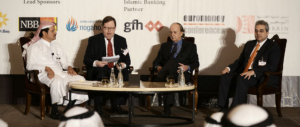Ever since the discovery of oil in the 1920s, Bahrain has experienced uneven and combined development – combined in the sense that it mixes old and new forms in society, and uneven as it is a development plot against the prior development in the West. The demographic structure in the country and the notion of nationality are being challenged and reconstructed today by both the rising number of expatriates (which currently stands at 52% of the population) and the state-led process of political naturalisation (where in between 2001 to 2007 an estimated number of 61,000 to 62,000 people were naturalised, serving no economic purpose). A political opportunist at the recent elections seized on these shifting dynamics, addressing his electorate in Hindi/Urdu. On the other hand, From 2001 to 2010, a total of 70 square kilometres of land were reclaimed in Bahrain, 90% of which was reappropriated as private property – furthering the interests of both the ruling class (such in the case of Premier group, owned by the country’s monarch, which finances its investments abroad in the process) and the country’s capitalist upper-middle class, who benefits from lucrative contracts and a new space for capital to operate. This has led Bahraini Academic Omar Alshehabi to suggest that Bahrain has been enduring a period of radical spatial-demographic transformations over time, largely driven by capital and state interests.
Alshehabi utilises the concept of the spatial-fixes of capital (literally how space can be altered to further capital accumulation) conceptualised by both David Harvey and Adam Hanieh. Harvey’s ‘spatial fix’ refers to the process of primitive capital accumulation, where capital creates new space for it to operate through the construction of infrastructure, land, factories and so on – such in the case of land reclamation. In addition to that, Hanieh suggests that the creation of a global space for labour in the GCC is a ‘spatial fix’, as much as it allows the state to not exploit its citizens hence minimising any threats that may occur from rising class-consciousness (where labour is essentially imported from a diverse selection of nationalities). Hence the local/foreign divide, which has only been aggravated by political naturalisation, is rather obviously an effort led to further segment society.
However one may note that while the analysis of Alshehabi arrives at a conclusion which quite rightly characterises the uneven and combined development in Bahrain, it seems to lack a wider focus on intersectional issues – issues that run across gender, class, ethnicity and so on. For example, Alshehabi provides no analysis whatsoever of female labourers due to the observation that expatriate men outnumber women by 3 to 1. This disregards the fact that domestic help in Bahrain (mostly imported labour) faces structural violence to say the least, that even the country’s labour law does not address directly (resulting in exhausting working hours).
While putting in mind the argument made by Ghandi (and others) which suggests that the ‘Western Civilization’ – alternatively, capital – displaces women from their homes into the productive sphere, one may find the need for another dimension of a spatial fix of capital, namely the ‘intersectional spatial-fix’ of capital, where the displacement of labour from its ‘space’ into that of the capitalist is viewed within the context of the intersectional system. That has been specifically true in Bahrain where colonial efforts at educating women and setting up the first primary school for women in 1928 resulted in a significant number of females being employed by the private sector by the 1980s; essentially displacing women and economically empowering them to sell their labour. The state has portrayed itself as a benevolent protector of women’s rights (as it does with any other segmentation in society), yet such a claim becomes difficult to validate when considering the case of family law.
The case of family law elucidates the varying levels of oppression and exploitation a Bahraini woman faces when filing for a divorce. While the state has lead an effort to codify family law, only the Sunni section of the law has been passed and the Shi’a section was abandoned due to a very reactionary countermovement from Shi’a scholars and the Al Wefaq opposition bloc. The Shi’a Ja’fari courts are riddled with rumours of outright exploitation and corrupt judges, where judges have allegedly placed a conditionality in some cases that the woman – especially when economically disempowered – has to temporarily marry them (muta’a marriage) in order to get divorced. The muta’a marriage itself is rather controversial, where many take to the claim that it is simply prostitution under a religious cover. On the other hand the codified Sunni law only gratifies that the law is coded, not just – where for instance in specific cases women have to pay their previous life partners the sum of the dowry if they wish to get a divorce. On a similar note, male MPs who ran for the recent elections have promised to end the ‘problem of spinsters in society’ – which only proves the extent of which the use of (in this case political) power is used to subject women and limit their life choices. Therefore an intersectional spatial-fix may prove to be a useful tool to arrive at a holistic understanding of development in Bahrain, and the varying forms and levels of exploitation.
To conclude, it would be worth mentioning that I have selectively chosen concepts from Alshehabi’s analysis – and would encourage all to read the journal article to get a wider understanding of the topic. The proposed third dimension of a spatial fix of capital (namely the intersectional spatial-fix) elucidates the varying forms and levels of oppression that exist within the society and could provide a more holistic account of the uneven and combined development in Bahrain. The radical spatial-demographic transformations over time that Bahrain has endured has not only been projected through the recent elections, but also – as Alshehabi suggests – have caused much of the political upheavals leading up and following the uprising in 2011.

Mohamed Aldaaysi is part of the organising team of the @Bahrain_Debate. He is also pursuing a BA in Politics and Development at the School of Oriental and African Studies. Mohamed tweets at @MDaaysi.
This article has been republished from the LSE’s Middle East Centre Blog.
The views expressed in this article are the author’s own and do not reflect that of the Bahrain Debate’s organising body.



